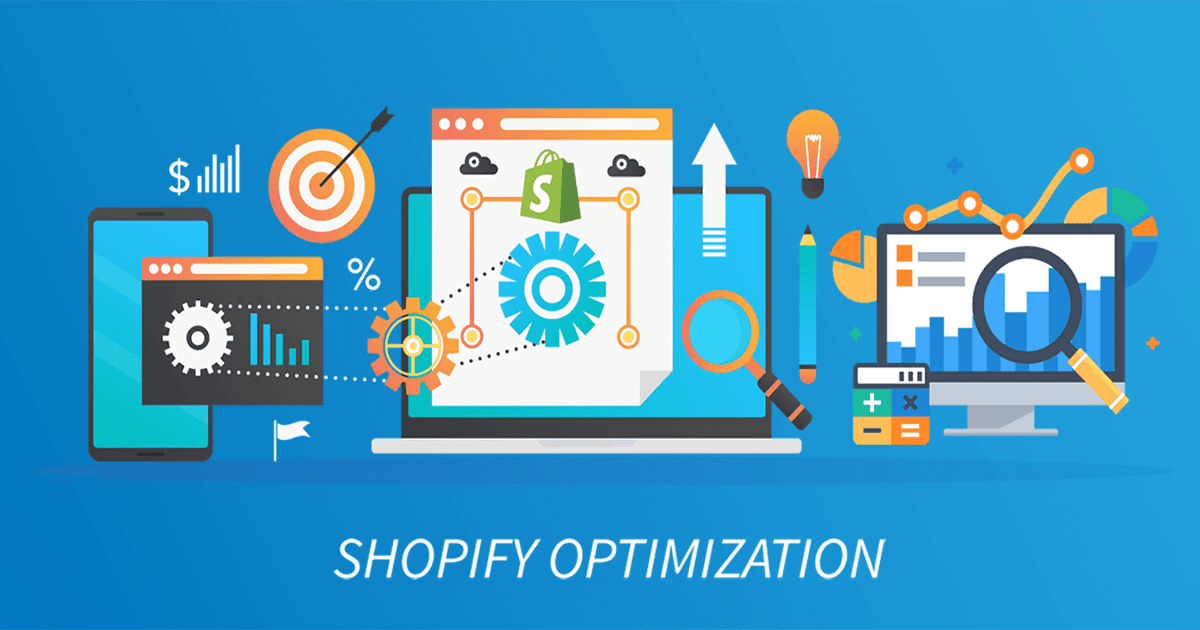12 Dec

Shopify Store owners are always focused on generating more traffic to their website by developing unique campaigns. It’s also important to optimize your online store to ensure you keep the visitors you have worked so hard to earn. Even minor issues will drive visitors away from your site, leading to more and more lost sales.
Here are some reliable ways to improve your site performance and maximize conversions.
Run A/B Tests
Conduct A/B test it’s a crucial element of any digital marketing which can be highly effective when optimizing a store. A/B testing involves comparing two different variants of the same element, such as an ad or landing page in order to identify which is the better option.
For example in an email campaign, you might test two different subject lines to see which one connects with recipients. Similarly, you can make changes to a product page and run a test to see whether the new version leads to more sales.
Also, you can set up goals in Google Analytics to measure certain behaviors such as accessing a specific page or signing up for your newsletter. It’s easy to track the performance of two test variants through Google Analytics.
Improve your search tool
This is the simplest way for users to find products on any website, but they don’t know the specific keywords. Moreover, if the search icon is not clearly visible to the customer they might not even realize that the option is available.
The first step towards crafting a better user experience is to make the search bar visible to the visitors. Indeed it should be the first thing visitors see when they’re browsing through product pages. Using the search bar is a strong predictor of whether a given lead will eventually make a purchase.
Additionally, it’s important to offer more intelligent search results when a customer enters particular keywords. Traditional search tools simply take a given input, and display every entry that contains the input. Unfortunately, this approach can make it difficult for leads to find what they’re looking for.
Intelligent search tools can automatically correct the misspelled words, and can also understand the alternative word visitor used. By this you can make it easy for your visitors to search what they are looking for.
Offer better product images
While shopping online, customers are more afraid than purchasing physically. Images are a great way to communicate details about your product. Hence, it’s important to use high resolution images to make features clear.
You should do everything you can to give a better idea of what product looks like and how it functions. For example IKEA offers an innovative augmented reality app that allows users to visualise how a given piece of furniture will fit in an existing room. Simulating or even going beyond the in-person shopping experience will give visitors more confidence in the products they’re looking at.
Furthermore, You can add multiple pictures of a product from different angle. Also, if your product has some functionality you can upload a video to show the functions. Don’t forget to answer common customer questions or concerns such as estimated measurements for different clothing sizes.
Avoid hidden charges
Customers expect brands to offer transparent pricing from the start. Usually some brands hide shipping charges and some don’t show it until you are on the checkout page.
Your shipping and returns policies should also be easily accessible from any page on your website. If you offer free shipping for orders above a certain minimum, for example, that information should be clearly visible on your home page along with any product pages.
Follow up on abandoned carts
Abandoned carts are a key source of lost sales for ecommerce owners. Reducing your cart abandonment rate is crucial for generating more conversions, and converting more abandoned carts is just as important.
To reduce abandoned carts, start with an initial follow-up message an hour or two after the end of the visit. At this point, your products are still fresh in their mind, and a quick reminder might be enough to make the sale. You can also use this opportunity to display similar products that they could be interested in.
If you don’t get any response after the first message wait at least 24 hours before contacting the lead again. The second message is the perfect chance to include a small offer and give them another reason to come back to your site. Even just ten percent off will help you convert a surprising percentage of abandoned carts, and it’s a small price to pay to acquire or retain a customer.
Conclusion
Driving traffic towards your Shopify store and optimizing the store is a log process but it’s fruitful too. the number of visitors, the percentage of visitors who make a purchase, and the percentage of first-time customers who continue buying your products defines your sale. Increasing any of the three elements will help you to improve sales.
The five tips discussed above will go a long way toward converting more visitors and minimizing lost sales on your Shopify store. All you have to give time to your store and work on the points.
